Arisi Upma (Rice Rava Upma) by DK on Nov 20, 2013

Has it happened to you that you grew up eating certain foods but forgot them along the way for no particular reason ? And when you finally recalled and made it (and relished it), you got so sick with nostalgia that it shocked you? No? Yes? Well, it happens to me and the times it has happened, I have been astounded at how much foods have a grip on your emotional quotient.
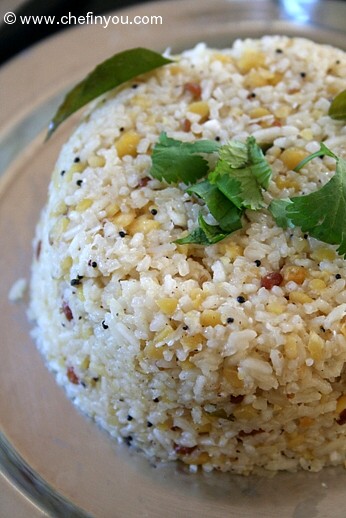
This Arisi Upma made me extremely philosophical and reflective the other day (to a bout of amusement/laughter from the dudes!). When the first spoonful went in, I was instantly teleported to my mom's kitchen, eating it at the dining room and that warmth of mom's lap. There was instant ache and longing for the luxuries which only mothers can give. I know I sound like a novelist, writing material to satisfy audiences longing for rom-com. Sigh! Oh well.

It took my bro, specifically asking for this recipe (patiently waiting even for months), for me to remember this dish and make it happen in my kitchen once again after all these years. Peppery with a mild bite, this belongs to the same breakfast category like that of Rava Upma.
Variation:
Though many families, insist on soaking the rice beforehand, my mother never did this and hence I don't either. But you can soak, dry and then pulse the rice into rava instead of how I have done.
Variation:
Though many families, insist on soaking the rice beforehand, my mother never did this and hence I don't either. But you can soak, dry and then pulse the rice into rava instead of how I have done.
- Cook time:
- Prep time:
- Serves: 2 people
- Yields: Makes around 3 cups. Good for 2-3 people
Ingredients
- For the Base (Rava)
- 1 cup raw Rice
- 1/4 cup Toor Dal (Pigeon Peas, Thoram paruppu)
- 1/2 tsp Whole Peppercorns (Mizhagu)
- 1/2 tsp Cumin seeds (Jeera)
- To Temper
- 1/2 tsp Mustard Seeds
- 1 tsp Channa Dal (Bengal Gram, Kadala paruppu)
- 1 tsp Urad Dal (Black Gram, Uzhutham Paruppu)
- 1 dried Red Chili, or to taste
- 1 large pinch Asafoetida (LG powder, hing, perungayam)
- Optional but recommended
- 1-2 tbsp fresh Coconut
- 1 tsp Ghee
Method
1.
Grind the Toor Dal, Peppercorns and Cumin seeds coarsely. Just pulse it for 3-4 times.

2.
until it resembles coarse bits.
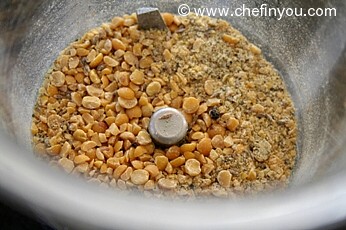
3.
Next add in the rice.
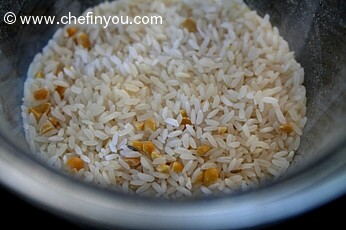
4.
Pulse it for another 5-6 times or until it resembles small coarse powder. This breaking it down into smaller pieces is what we call as "Rava" in Tamil. This Rava though is coarser than regular Rava/Sooji you get at the market. Its OK if you powder them a little more or they look little bigger than this. The world will still go round and the dish will still turn out alright :)
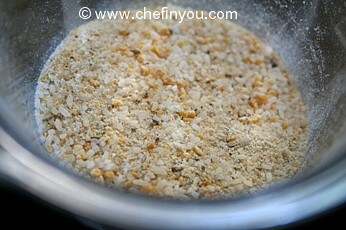
5.
Sieve this mixture a bit to remove the finer grains. Set aside.
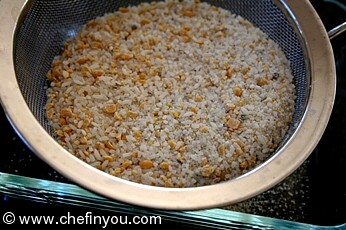
6.
In a skillet, add some coconut oil. I use a mix of 1/2 tbsp Coconut oil and 1/2 Sesame oil (not the toasted variety). When hot, add the mustard seeds.
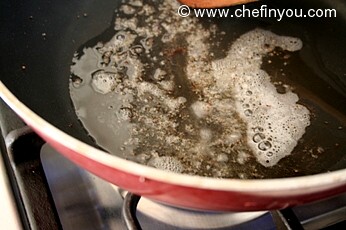
7.
Once it pops, add the rest of the ingredients - asafoetida, red chilli, channa dal and urad dal, in that order.
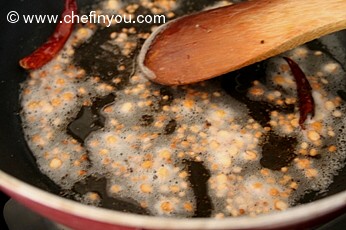
8.
When the lentils start turning red, add 2-1/2 cups water. Add curry leaves.
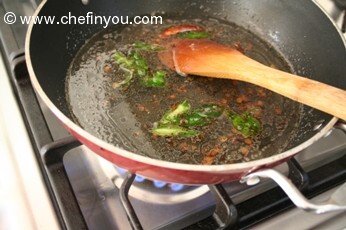
9.
Let it come to a boil.
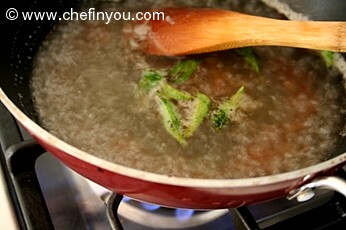
10.
Now add grated coconut and salt. Stir to combine.
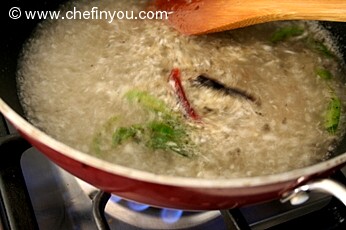
11.
Lower the heat and now slowly add the rice-lentil mixture.
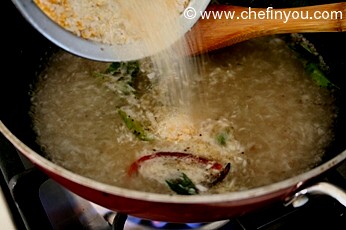
12.
Stir to combine,
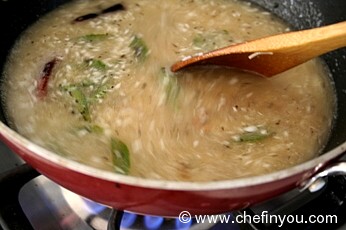
13.
close with a lid
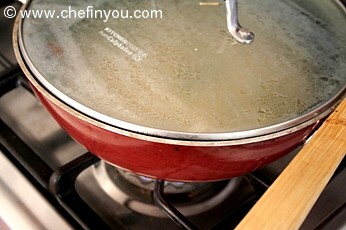
14.
and cook for another 8-10 min in low heat.
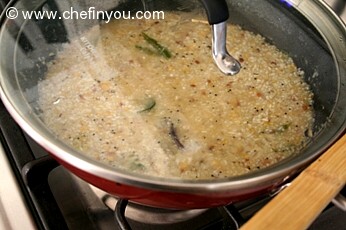
15.
Give it a stir on and off
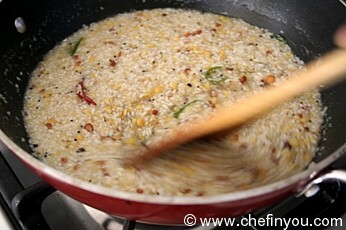
16.
its done when the water is absorbed and the grains are soft (and cooked). If it looks dry (which is why low heat is essential) and/or if you think it needs to cook a little more, simply "sprinkle" a little water, stir, close the lid again and cook for another few minutes until done.
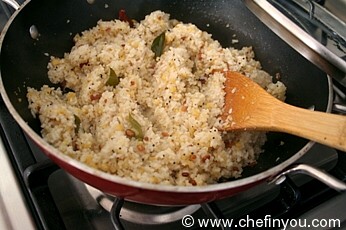
17.
Though this is entirely optional, I would personally recommend this step. Add a little ghee right at the end and give it a mix. That beautiful aroma when the ghee hits the hot Upma is sublime to say the least, not to talk about that extra oomph that it adds to this upma. Mix and keep the lid closed until serving.
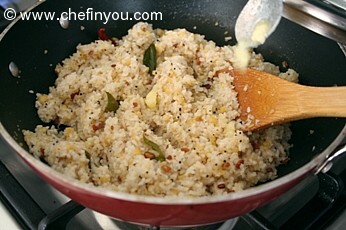
Serve hot with Coconut Chutney (or coconut thogayal) and/or Kathrikkai Gotsu. A little hot fiery pickle won't hurt either. :)
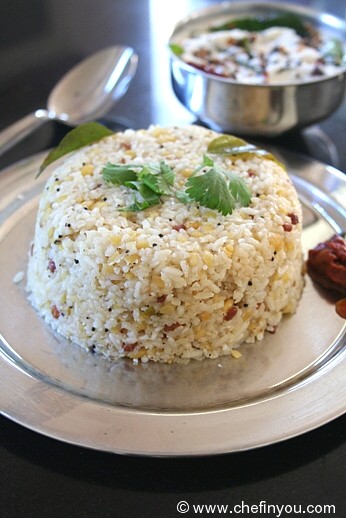

Filed Under these categories
- 28 Breakfast
- 291 Dairy Free
- 447 Gluten Free
- 45 Indian Breakfast Recipes
- 705 Kid Friendly
- 61 Main Course - Rice
- 384 Nuts Free
- 163 One Dish Dinners
- 177 Sugar Free
- 34 Under 15 min - Breakfast
- 499 Vegan Recipes
Recipe Reference
Mom's recipe
Related Posts
OPOS Rava Upma By DK on Mar 5, 2018
Rava Upma (Savory Semolina Pudding) By DK on May 9, 2009
Pasi Paruppu Payasam (Moong dal Kheer) By DK on Nov 7, 2013
Paruppu Vadai (Karthigai Vadai) By DK on Nov 12, 2013
Vella Puttu using Idli Rava (Navaratri Special) By DK on Oct 9, 2015
Easy Rava Kesari (OPOS) By DK on Mar 9, 2018
Leave a Reply
I love to hear from you! I read each and every comment, and will get
back as soon as I am able to.
11 Comments
By Kalaiselvi on Apr 8, 2015
I am very interest in cooking I tried some recipe from your website
By Indu on Mar 29, 2015
Why do you serve the mixture to remove finer grains?
By subbarayan on Oct 19, 2014
Istead of making this in a wok if use the present day rice cooker the upma comes out great.In place of dry chillies we use green chillies.(Pacha milagai)
Yes, I agree. --DK
By Manasi on May 6, 2014
I tried this and served with the tomato chutney...was super yummy. I just did a small variation on garnishing it with fresh pomegranate while serving and combination worked out well.
By sowmya on Feb 12, 2014
We do this regularly. we do it n the traditional uruli. we get those crispy stuff in the end which is awesome and always have to fight for it. A small variation in this is preparing half the dough into steamed kozhakattai. the rest making round small adais on the tawa. good to know thaT you have brought out a very old recipe .
By Harini Suresh on Jan 9, 2014
Even though my mom used to make this I was not a big fan of this while young. I learnt to cook this from my MIL. She would sprinkle water on the rice until rice is damp and set aside for 30 min and grind it to Godhumai Rawa consistency. My husband and I are big fans of this dish and I make this at least once a week. He always requests me to make a little extra to take it to work the next day.
By meena on Dec 30, 2013
Hi,
I just came across ur website and it has got a different feel and outlook...
OMG, this arisi upma was the staple food in my mom's place and when I saw ur post, got really nostalgic...
But have you tried the same using pressure cooker...I have always done with pressure cooker and it is one of the quickest and tastiest recipe I know of :-P .
By Hari Chandana on Nov 22, 2013
Very simple and delicious upma.. looks too good.. thanks for sharing :)
By Vijaya on Nov 22, 2013
yea defenitely
By Vijaya on Nov 21, 2013
I made it lot of times. I usually prepare with Brown Rice same method . I prepare once in a week :lol:
I was going to mention using Brown rice as well. DO you soak the brown rice overnight? --DK






By Amra Assath on Aug 12, 2016
Definitely. --DK